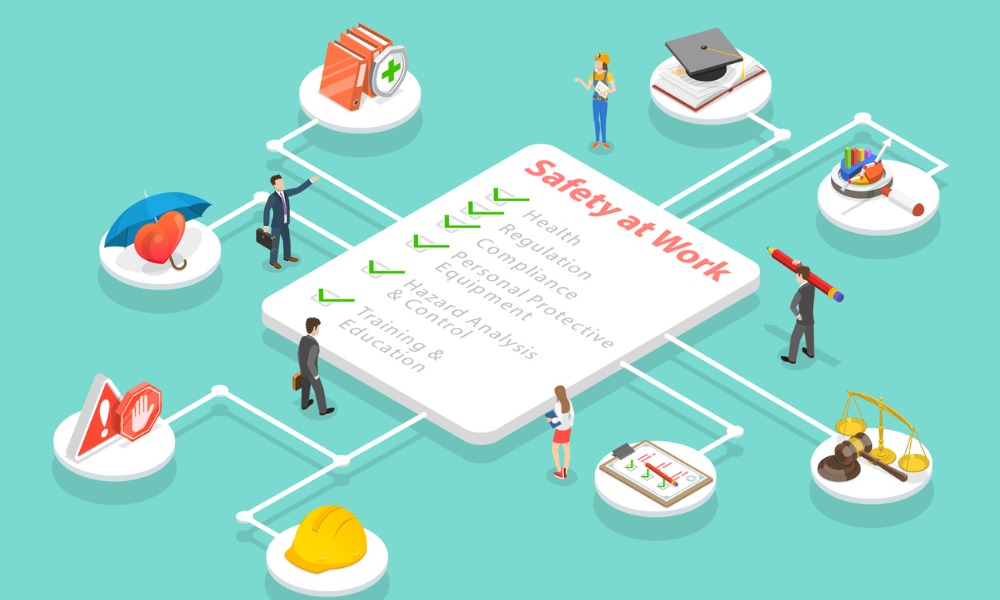One of the important duties of the government is to protect its laborers, workers, and employees. For this purpose, various laws are enacted which provide for the 3 workers’ rights that every employer must respect.
What are the laws that outline the 3 workers’ rights in Canada?
The 3 workers’ rights of all employees in Canada can be found in different laws, such as:
- labor laws
- occupational health and safety (OHS) laws
- workplace human rights laws
These laws can be divided into two based on their application:
- Federal laws: applies to all federally regulated sectors and Crown corporations
- Provincial or Territorial laws: applies to workplaces that are not federally regulated within the province or territory
The ones which expressly provide for the 3 workers’ rights are found in the Canada Labour Code and in these provincial/territorial laws:
- Ontario: Occupational Health and Safety Act
- Québec: Act respecting occupational health and safety
- British Columbia: Occupational Health and Safety Regulation
- Alberta: Occupational Health and Safety Act
- Northwest Territories: Occupational Health and Safety Regulations
Some of these provincial/territorial laws are enabled by their primary law. For example, British Columbia’s OHS Regulations are enacted under the BC’s Workers Compensation Act; while the OHS Regulations of the Northwest Territories are enabled by its Safety Act.
What are your 3 basic rights as an employee in Canada?
Here is an overview of the 3 workers’ rights applicable to every employee in Canada.
All workers in Canada have three basic rights. Learn about the right to know, right to participate and right to refuse, in our fact sheet, now available in eight languages: https://t.co/1IfoYfwWQm#WorkersRights #LabourDay pic.twitter.com/r1hEwlTvrk
— CCOHS (@CCOHS) September 4, 2023
These rights are at the heart of occupational health and safety practices throughout the country.
We’ll go into each of these rights in more detail:
Right to Know
Workers have the right to know the hazards in the workplace and how to control these hazards.
Every employee must be informed of the potential hazards in the workplace, and how to access additional information on these hazards.
Some examples of these information that employees must know of are:
- The policies and regulations on workplace human rights and OHS
- The workplace’s safe work practices and procedures
- The emergency procedure if an accident or an injury occurs
This is in addition to the necessary training that an employer must provide to its workers, before they are expected to handle any hazardous chemicals, substances, or equipment.
Right to Participate
The right to participate ensures that all employees are given the opportunity to look after their health and safety in the workplace.
This includes the law’s mandate for the formation of joint health and safety committees (JHSCs) or the selection of the health and safety representative (HSR). For example, under BC’s Workers Compensation Act, a workplace that has more than 20 regular employees must establish a JHSC.
One of the powers of these committees is to report to the employer any workplace hazard that is reported to them by an employee. The committee may also make recommendations to the employer to address such hazards and conduct investigations whenever the need arises.
Right to Refuse Dangerous Work
The last of the 3 workers’ rights is the right to refuse any dangerous or harmful work.
The right to refuse provides for the right of an employee to refuse dangerous work, subject to certain conditions. The employee must prove the existence of these conditions before this right can be enforced against their employer.
An employee can refuse:
- the use or operation of a machine, or
- to work in dangerous workstation because of its condition, or
- to perform a specific activity
This refusal of the above-mentioned by the employee must be based on a “reasonable cause” that:
- it will be a danger to themselves or to another employee in the workplace, or
- such work or operation of a machine or a thing contravenes the law.
What constitutes “reasonable cause” is evaluated on a case-by-case basis.
Exceptions to the Right to Refuse Dangerous Work
The right to refuse dangerous work has certain exceptions.
For instance, under section 128 (2) of Canada’s Labour Code, an employee may not refuse work:
- if the refusal will put another person’s life, health, or safety at risk or in danger; or
- if the danger complained of by the employee is the employment’s normal condition
In addition, the right to refuse dangerous work is restricted to certain classes of employees. This is due to the inherent nature of their work, or because it is a normal condition of their employment. These employees include:
- Employee of a ship or an aircraft
- Police officers
- Firefighters
- Health care workers
Process in Refusing Dangerous Work
An employee or a worker who wishes to exercise their right to refuse dangerous work must abide by the process set by law.
Each law or regulation on OHS and workplace human rights specifies these steps. For example, under Ontario’s OHS Act, there are two stages for the valid exercise of the right to refuse dangerous work.
The first stage provides for the following:
- Employee must inform their employer or supervisor and explain their reasons for such refusal
- Supervisor or employer will investigate, along with the refusing employee, and the JHSC/HSR/ union representative.
- During the investigation, the employee must remain in a safe environment until the investigation is completed. The employee must be reasonably near for the investigation.
- If the issue is resolved and the employee agrees to its resolution, the employee returns to work. Otherwise, the process will proceed to the second stage.
The second stage of the process provides:
- Employee, or employer (or their representative) informs the Ministry of Labour, Immigration, Training and Skills Development inspector (MLITSD).
- The inspector from the MLITSD investigates, in cooperation with the employee, the employer, and the JHSC/HSR/union representative.
- The MLITSD inspector informs all parties of their decision in writing.
- Employee returns to work: if the MLITSD inspector finds that the situation does not endanger the employee or other employees.
- Employer addresses the workplace danger or hazard: if the MLITSD inspector finds that a workplace danger or hazard is present, which must be addressed by the employer, before the employee is allowed to return to work.
Got more questions about these 3 workers’ rights in Canada? Seek advice from the best workplace human rights lawyers in Canada as ranked by Lexpert.





